This article was medically reviewed by Erik Kramer, DO, MPH and by wikiHow staff writer, Danielle Blinka, MA, MPA. Dr. Erik Kramer is a Board-Certified Primary Care Physician at the University of Colorado. With over 15 years of experience, his clinical interests include obesity and weight management, diabetes care, and preventive care, as well as embracing a holistic approach to primary care. He received his Doctorate in Osteopathic Medicine (D.O.) from the Touro University Nevada College of Osteopathic Medicine and completed his residency at Central Maine Medical Center. Dr. Kramer is a Diplomate of the American Board of Obesity Medicine.
There are 9 references cited in this article, which can be found at the bottom of the page.
This article has been viewed 10,491 times.
Dealing with lymphedema can be frustrating and may prevent you from living the life you want. Lymphedema happens when there’s a blockage in your lymphatic system that prevents fluids from draining, which results in swelling. Primary lymphedema occurs by itself, while secondary lymphedema is caused by another medical condition, like cancer treatment. While you can’t cure lymphedema, you can manage it with a healthy diet, lifestyle changes, and home treatments. If this doesn’t work or your lymphedema is severe, talk to your doctor about getting medical treatment.
Steps
Diagnosing Lymphedema
-
1Recognize the symptoms of lymphedema. Lymphedema causes swelling, restricted mobility, and discomfort in your arm or leg. It’s important to see your doctor if you think you have lymphedema to make sure you’re getting the right treatment. Your doctor will rule out other potential medical conditions and give you a proper diagnosis. Visit your doctor if you notice the following symptoms:[1]
- Swelling in all or part of your arm, leg, finger, or toe
- Feeling heavy or tight in your arm or leg
- Restricted range of motion
- Ache or pain
- Recurring infections
- Hardening or thickening skin
Tip: Lymphedema swelling can range in size from mild swelling up to extreme swelling that limits your mobility. It’s best to treat it as soon as you notice the swelling because it will likely worsen.
-
2Undergo imaging tests so your doctor can diagnose a lymphedema. An imaging test will help your doctor see what’s causing your symptoms. These tests will be painless but you might have some discomfort. Talk to your doctor about the tests you need and follow their recommendations. Keep in mind that imaging techniques lack standardized techniques, so you might get variable results. Your doctor may recommend 1 or more of the following imaging tests:[2]
- MRI to produce 3D images.
- CT scans to look for lymphatic blockages and produce images.
- An ultrasound to check for blockages and make sure your blood is flowing.
- Radionuclide imaging where your doctor injects you with a dye so they can see how the dye moves through your lymphatic system.
Advertisement -
3Discuss your medical history with your doctor to get a diagnosis. Your doctor will make a diagnosis based on your medical history and your current symptoms. Tell your doctor about past surgeries, medical conditions, swelling, and medications you’re taking. Then, explain when your symptoms started, how they’ve progressed, and how you feel. Based on this information and your tests, your doctor will make a diagnosis.[3]
- Your doctor may order additional tests, like a complete blood test (CBT).
Doing Home Treatments
-
1Wash your skin with soap and apply fragrance-free moisturizer daily. You’re at a greater risk for infection when you have lymphedema, so it’s important that you keep your skin clean and moisturized. Use a mild soap and warm water to gently cleanse your skin at least once a day. If you get really dirty or sweaty, wash your skin again. Then, apply a fragance-free body cream or lotion over your skin to add moisture.[4]
- Use a fragrance-free moisturizer because scents can irritate your skin.
-
2Do gentle exercises to work your affected limb and drain the fluid. Moving your limb helps you regain your mobility and improves the drainage from the lymphedema. The type of exercise you do will depend on the severity of your lymphedema. Talk to your doctor or lymphedema therapist to find out which exercises are safe for you.[5]
-
3Wrap diagnosed lymphedema to help it drain toward the core of your body. It’s very important that you have a diagnosed lymphedema before wrapping it, because other causes of swelling (like a clot) shouldn’t be wrapped. Use a compression wrap to help your lymphedema drain. Start wrapping below the lymphedema, and apply the layers tightly so that it pushes into your skin. Then, continue to wrap your limb until you reach the top of the lymphedema. As you near the top, loosen the wrap so that the fluids are pushed up towards your core.[6]
- You might feel some discomfort, but your limb shouldn’t be in pain. If you feel pain or notice that your foot or hand is turning blue or gray, remove the wrap and loosen it.
- Ask your doctor or lymphedema therapist to show you the correct way to wrap yourself.
Did You Know? Your lymphatic system doesn’t have an organ like your heart that keeps the fluids pumping. That means you need to help the trapped fluids start moving back toward the center of your body.
-
4Wear compression garments on your affected limbs for drainage. Applying light pressure to the lymphedema will help drain the trapped fluids. Use compression shirts, pants, or stockings, depending on where your lymphedema is located. Wear your compression garments as often as possible to help with drainage.[7]
- It’s especially important to wear your compression garments during exercise. As you move, the compression may help drain your lymphedema.
-
5Elevate your affected arm or leg to help your lymphedema drain. Gravity can help draw the trapped fluids back toward your core. Sit or lie down, then use pillows to prop up your affected limb. Do this at least once a day while you’re relaxing to help slowly reduce your lymphedema.[8]
- You may not notice immediate results, but keep doing this every day. It will slowly help the fluids drain from your lymphedema, though it might not totally go away.
Making Diet and Lifestyle Changes
-
1Build your diet around fresh fruits and veggies to nourish your body. Vitamins and minerals support a healthy immune system, as well as your energy levels. Fresh fruits and veggies help you get the nutrients you need, so eat them at meals and snacks.[9]
- Eat a serving of lean protein at each meal. This includes chicken, turkey, fish, tofu, nuts, beans, and meat replacements.
-
2Limit your sodium consumption to less than 1,500 mg daily. Since sodium can make you retain fluids, it’s important to limit how much you eat. Monitor your sodium consumption to make sure you eat less than 1,500 mg per day. This may help you prevent additional swelling.[10]
- Avoid using table salt to season your food.
- While you’re cooking, season your dishes with herbs and spices that don’t contain salt.
- Reduce or eliminate processed foods because they typically contain more sodium.
-
3Sleep for 7-9 hours a night so your body can repair itself. Your body repairs and heals itself while you sleep, so it’s important that you stay well-rested. Maintain a sleep schedule by going to bed and waking up at the same time each day. Additionally, follow a sleep routine to help you fall asleep more easily each night.[11]
- A good sleep routine might include relaxing for an hour before bed, avoiding screens for 2 hours before bed, and changing into comfortable pajamas before bed.
-
4Manage your stress so your body can use its energy for healing. While stress doesn’t directly cause a lymphedema, it may make it harder for you to recover. Stress affects your immune system and drains your energy, so you have a harder time fighting off infections. Find stress relievers that help you cope, then incorporate them into your daily routine.
- For instance, go for nature walks, vent to a friend, color in an adult coloring book, take a hot bath, engage in a hobby, use aromatherapy, or do something creative.
-
5Go to a support group for people with lymphedema. Dealing with lymphedema can be frustrating, especially if it limits your mobility. Fortunately, there are people out there who understand what you’re going through. Look for a lymphedema support group in your area or connect with people online to talk about your progress and get advice.[12]
- Check with the National Lymphedema Network to find a group in your area.
- Your doctor may also be able to find you a local group.
Getting Medical Treatment
-
1See a certified lymphedema therapist to learn safe exercises to do. It’s important to exercise your affected limb, but you don’t want to do vigorous exercise. To be safe, work with a certified lymphedema therapist early in your treatment to learn the best exercises for you. Then, do your exercises exactly as the therapist instructs.[13]
- Ask your doctor for a referral or look for a certified lymphedema therapist online.
-
2Get a manual lymph massage from a specialist therapist. Getting your lymphedema massaged can help the area drain faster, which may reduce the size of your lymphedema. However, you need to see a massage therapist who is trained to treat lymphedema. Ask your doctor for a referral or look for a specialist online.[14]
- Your massage therapist will teach you self-massaging techniques you can use at home. Make sure you follow their instructions exactly because doing it wrong may cause an issue.
- In some cases, a massage that isn’t done correctly may cause your lymphedema to worsen. Don’t go to a massage therapist who isn’t trained to treat lymphedema.
Warning: Don’t get a massage if your skin is infected, you may have a blood clot, or you have a disease.
-
3Talk to your doctor about complete decongestive therapy (CDT). The best treatment for lymphedema is CDT. This is a combination of manual drainage of your lymphedema, applying compression, exercising, caring for your skin, and performing self care to protect your health. Work with your doctor to implement all of the treatment recommendations for lymphedema.[15]
- Most of the CDT plan will consist of exercises and self care at home. This includes things like wrapping the area, elevating the area, and doing your exercises.
- Your doctor can refer you to a certified lymphedema therapist to help drain your lymphedema.
- For this treatment to work, you have to commit to taking care of yourself and following the doctor’s recommendations. Patients who don’t keep up with recommendations end up having to deal with the lymphedema for much longer.[16]
-
4Ask about surgery to remove a severe lymphedema. You probably won’t need surgery, but sometimes it’s helpful for improving severe lymphedema. Talk to your doctor to find out if surgery may be right for you. Your doctor may recommend 1 of the following procedures:[17]
- Removing excess skin or tissue around the lymphedema.
- Using liposuction to remove fat from the lymphedema.
- Repairing your lymphatic system to restore the flow of fluids.
Warnings
- Lymphedema can worsen if you don’t treat it. Work with your doctor to create a treatment plan that works for you.[19]⧼thumbs_response⧽
- You’re at a higher risk of infection when you have lymphedema, so take good care of your body.⧼thumbs_response⧽
References
- ↑ https://my.clevelandclinic.org/health/diseases/8353-lymphedema
- ↑ https://my.clevelandclinic.org/health/diseases/8353-lymphedema#diagnosis-and-tests
- ↑ https://www.hopkinsmedicine.org/health/treatment-tests-and-therapies/treating-lymphedema
- ↑ https://www.hopkinsmedicine.org/health/treatment-tests-and-therapies/treating-lymphedema
- ↑ https://www.nhs.uk/conditions/lymphoedema/treatment/#
- ↑ https://www.hopkinsmedicine.org/health/treatment-tests-and-therapies/treating-lymphedema
- ↑ https://www.nhs.uk/conditions/lymphoedema/treatment/#
- ↑ https://www.hopkinsmedicine.org/health/treatment-tests-and-therapies/treating-lymphedema
- ↑ https://my.clevelandclinic.org/health/diseases/8353-lymphedema
- ↑ https://www.hopkinsmedicine.org/health/treatment-tests-and-therapies/treating-lymphedema
- ↑ https://www.sleepfoundation.org/how-sleep-works/how-much-sleep-do-we-really-need
- ↑ https://thelymphielife.com/links/
- ↑ https://my.clevelandclinic.org/health/diseases/8353-lymphedema
- ↑ https://www.nhs.uk/conditions/lymphoedema/treatment/#
- ↑ https://www.oncolink.org/support/side-effects/lymphedema/lymphedema-what-you-need-to-know/treatment-for-lymphedema-complete-decongestive-therapy
- ↑ https://www.ncbi.nlm.nih.gov/pubmed/9565129
- ↑ https://www.nhs.uk/conditions/lymphoedema/treatment/#
- ↑ https://www.nhs.uk/conditions/lymphoedema/treatment/#
- ↑ https://my.clevelandclinic.org/health/diseases/8353-lymphedema
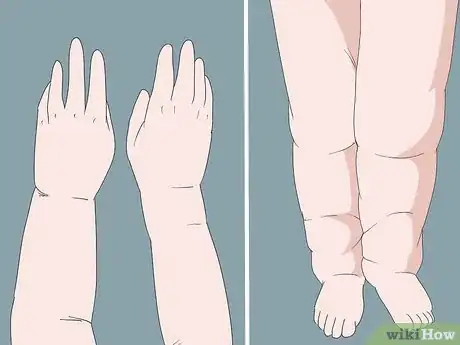
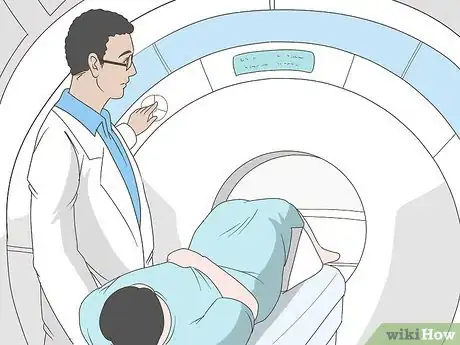
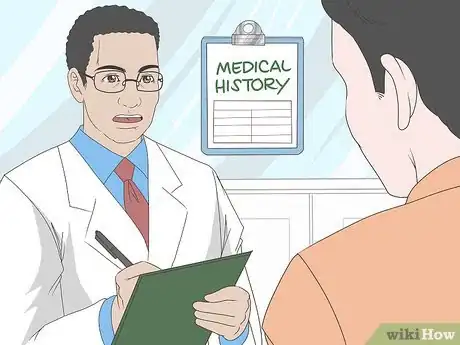
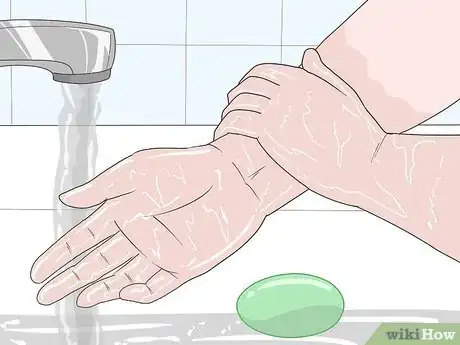
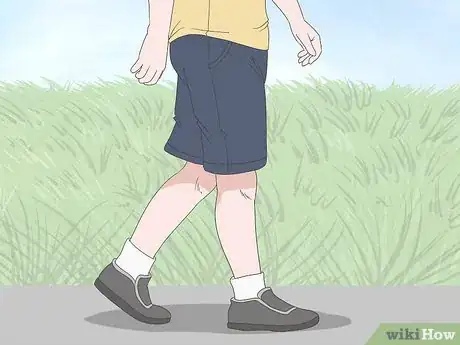
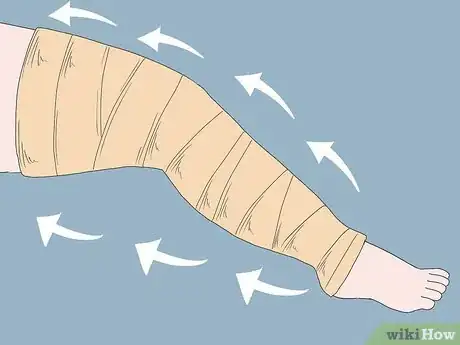
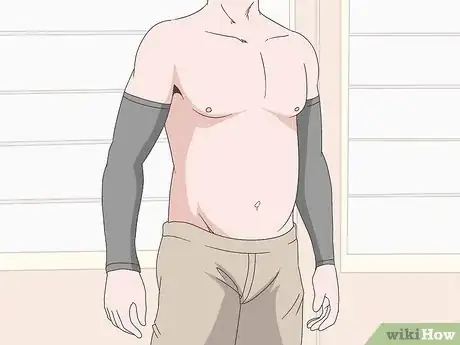
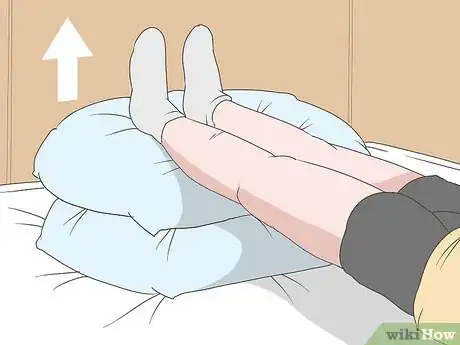

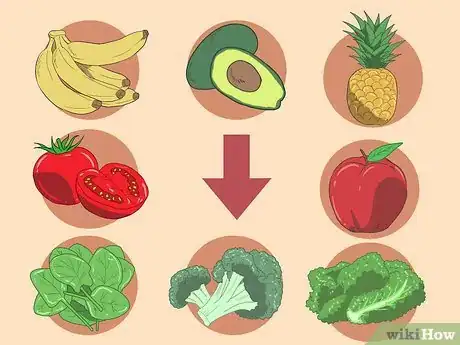



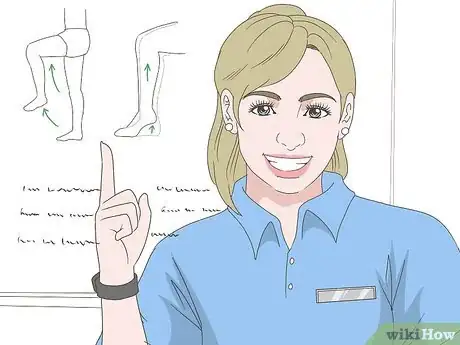
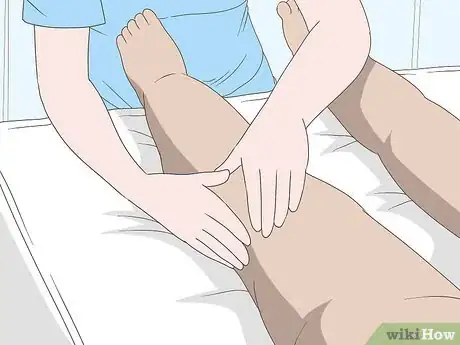
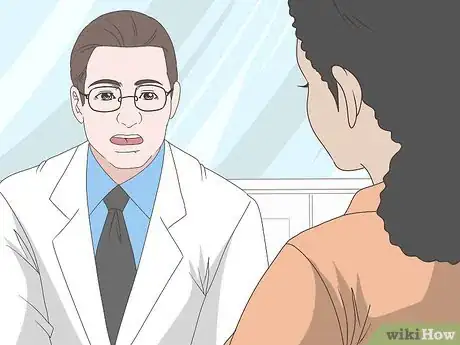

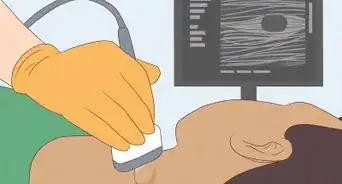

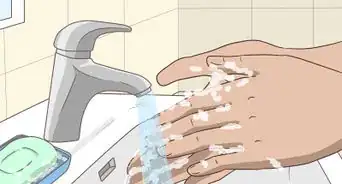

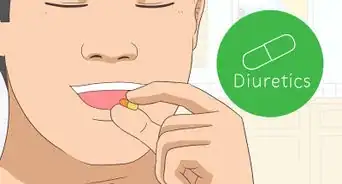
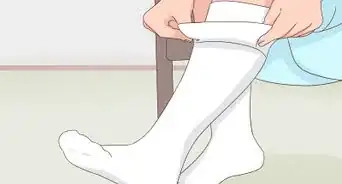
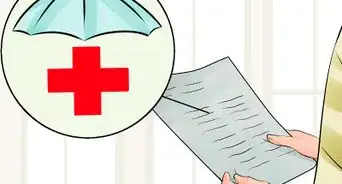
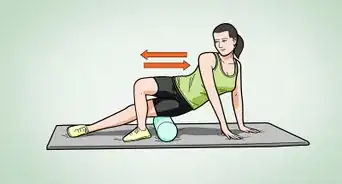

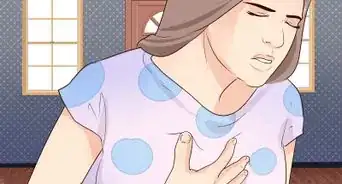
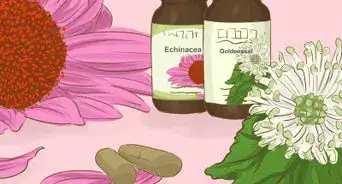

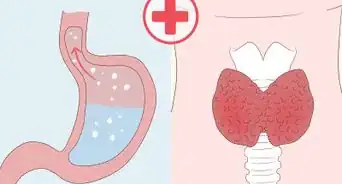
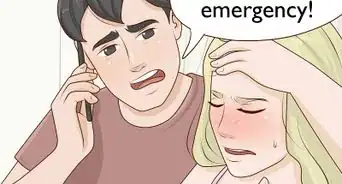









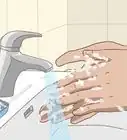
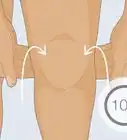




































Medical Disclaimer
The content of this article is not intended to be a substitute for professional medical advice, examination, diagnosis, or treatment. You should always contact your doctor or other qualified healthcare professional before starting, changing, or stopping any kind of health treatment.
Read More...